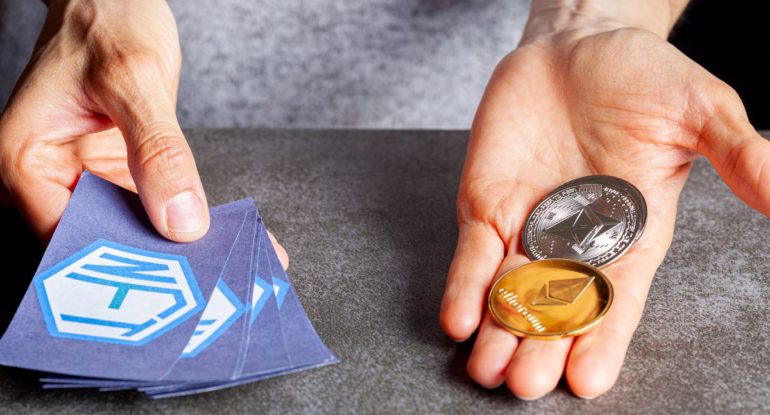March 5, 2024 by Diana Ambolis
860
In the ever-evolving landscape of digital assets, Non-Fungible Tokens (NFTs) have emerged as a groundbreaking concept, revolutionizing the way we perceive and trade digital content. NFT apps play a pivotal role in this ecosystem, providing platforms for creators, collectors, and enthusiasts to buy, sell, and showcase unique digital assets. This comprehensive guide delves into the
In the ever-evolving landscape of digital assets, Non-Fungible Tokens (NFTs) have emerged as a groundbreaking concept, revolutionizing the way we perceive and trade digital content. NFT apps play a pivotal role in this ecosystem, providing platforms for creators, collectors, and enthusiasts to buy, sell, and showcase unique digital assets. This comprehensive guide delves into the world of NFT apps, exploring their functionalities, applications, and the transformative impact they have on various industries.
Understanding NFTs:
NFTs are unique digital tokens that represent ownership or proof of authenticity of a specific digital asset, often using blockchain technology. Unlike cryptocurrencies such as Bitcoin or Ethereum, NFTs are indivisible and cannot be exchanged on a one-to-one basis, making each token distinct and irreplaceable.
Non-fungible tokens (NFTs) have gained significant popularity as unique digital assets representing ownership or proof of authenticity for various types of digital and virtual content. NFT apps facilitate the creation, buying, selling, and trading of these tokens. Here are some categories of NFT apps:
- NFT Marketplaces:
- NFT marketplaces serve as platforms where users can buy, sell, and trade NFTs. These marketplaces typically feature a variety of digital assets, including digital art, collectibles, virtual real estate, and more. Examples include OpenSea, Rarible, and Mintable.
- Digital Art Platforms:
- Specific NFT apps focus on the creation and trading of digital art as NFTs. Artists can tokenize their digital creations, allowing buyers to own a unique piece of digital artwork. Platforms like SuperRare and Foundation cater specifically to the digital art NFT market.
- Collectibles and Gaming:
- NFTs are widely used in the gaming industry and for digital collectibles. NFT apps in this category often allow users to buy, sell, and trade in-game items, skins, and virtual collectibles. Examples include NBA Top Shot for sports collectibles and Axie Infinity for blockchain-based gaming.
- Music and Entertainment:
- NFT apps in the music and entertainment category focus on tokenizing digital music, concert tickets, and other entertainment-related assets. Musicians and artists can use these platforms to create NFTs representing their work. Audius and Catalog are examples in this space.
- Virtual Real Estate Platforms:
- NFTs are also used to represent ownership of virtual real estate in decentralized virtual worlds. Platforms like Decentraland and CryptoVoxels enable users to buy, sell, and trade virtual land as NFTs.
- Social Tokens and Personal Tokens:
- Some NFT apps allow individuals to create and tokenize their personal brand or identity. Users can issue and trade social tokens, representing ownership or support for a particular individual or community. Roll and Rally are examples of platforms supporting social tokens.
- Content Creation and Collaboration:
- NFT apps in this category focus on collaborative content creation, allowing multiple artists or creators to contribute to a single NFT project. Mintbase and Async Art enable collaborative NFT creation with unique ownership structures.
- Education and Learning:
- NFTs are used in the education sector to represent certificates, degrees, and other educational achievements. Platforms like Accredible utilize NFTs to provide verifiable and unique digital credentials.
- Domain Names and Virtual Identities:
- NFTs are employed to represent ownership of domain names and virtual identities. Users can buy and sell NFTs representing unique domain names or digital identities on platforms like ENS (Ethereum Name Service).
- Marketplace Aggregators:
- Aggregator apps bring together NFT listings from various marketplaces, providing users with a consolidated view of available NFTs. This allows users to discover and track NFTs across different platforms. Examples include NFTb.io and TokenTrove.
- Governance Tokens:
- Some NFT platforms issue governance tokens as NFTs, enabling holders to participate in the decision-making processes of the platform. This adds a layer of community governance to NFT ecosystems.
These categories highlight the diverse applications of NFTs and the broad range of digital assets that can be tokenized. NFT apps continue to evolve, and new categories may emerge as the technology and use cases develop. The NFT space is dynamic, reflecting the creativity and innovation of creators, artists, and developers within the blockchain and digital asset ecosystem.
Key Features of NFT Apps:
Non-fungible token (NFT) apps play a crucial role in the creation, buying, selling, and trading of unique digital assets on blockchain platforms. Here are some key features that define NFT apps:
- Wallet Integration:
- NFT apps are integrated with cryptocurrency wallets to facilitate secure storage and management of NFTs. Users can connect their crypto wallets to the app, allowing for seamless transactions and ownership verification.
- Marketplace Functionality:
- NFT marketplaces within the apps serve as platforms for users to discover, buy, sell, and trade NFTs. These marketplaces showcase a diverse range of digital assets, including art, collectibles, virtual real estate, and more.
- NFT Minting:
- A fundamental feature of NFT apps is the ability to mint NFTs. Minting involves creating a unique token on the blockchain that represents ownership of a specific digital asset. Users, especially creators and artists, can mint their digital content as NFTs.
- User Profiles:
- NFT apps often include user profiles that display a user’s collection of NFTs, transaction history, and other relevant information. User profiles provide transparency and a sense of identity within the NFT community.
- Smart Contract Integration:
- Smart contracts are essential components of NFT apps, governing the creation, transfer, and ownership of NFTs. Smart contracts are executed on the blockchain and ensure the authenticity and uniqueness of each NFT.
- Payment Options:
- NFT apps support various payment options, typically in cryptocurrency, for purchasing NFTs. Users can transact using popular cryptocurrencies such as Ethereum (ETH) or other blockchain-specific tokens.
- Royalties and Secondary Sales:
- NFT apps often include features that allow creators to set royalty percentages for secondary sales. This means that the original creator receives a percentage of the sale when an NFT is resold on the secondary market, providing ongoing support for artists.
- Search and Discovery:
- Robust search and discovery functionalities are crucial for users to explore and find NFTs of interest. Filters, categories, and trending sections enhance the discoverability of digital assets within the app.
- Interactive Galleries:
- Some NFT apps incorporate interactive galleries or exhibition spaces where users can showcase their NFT collections. These virtual galleries aim to enhance the presentation and exhibition of digital art and collectibles.
- Community Features:
- NFT apps often include community features such as forums, social feeds, and commenting sections. These features foster community engagement, allowing users to connect, discuss, and share their experiences within the app.
- Verification and Authentication:
- Verification features help ensure the authenticity of creators and their NFTs. Verified badges or labels on profiles and NFT listings help users identify genuine and trusted contributors to the platform.
- Integration with Social Platforms:
- Integration with social media platforms enables users to share their NFT collections, achievements, and activities with a broader audience. This integration helps promote NFTs and expand the reach of the NFT community.
- Cross-Platform Compatibility:
- Some NFT apps ensure cross-platform compatibility, allowing users to access and manage their NFTs from different devices, including desktops, smartphones, and tablets.
- Educational Resources:
- Educational features provide users with information about NFTs, blockchain technology, and the specific functionalities of the app. Tutorials, guides, and FAQs help users navigate the NFT ecosystem.
- Security Measures:
- Security features, such as two-factor authentication and encryption, enhance the overall security of NFT apps. These measures help protect user accounts and ensure the safe storage of valuable digital assets.
- Notification System:
- A notification system keeps users informed about activities related to their NFTs, including new listings, bids, sales, and interactions within the community.
- Analytics and Insights:
- Analytics tools provide users with insights into the performance of their NFTs, including views, bids, and sales data. Creators can use this information to assess the success of their digital assets.
- Upgradability and Scalability:
- NFT apps should be designed with scalability in mind to accommodate growing user bases and increasing transaction volumes. Regular updates and improvements ensure the app’s relevance and competitiveness in the evolving NFT landscape.
By incorporating these key features, NFT apps provide users with a comprehensive and engaging experience within the dynamic world of non-fungible tokens. The continuous evolution of NFT technology and market trends may lead to further enhancements and innovations in NFT app functionalities.
Challenges and Considerations in the NFT Ecosystem:
The Non-Fungible Token (NFT) market has experienced rapid growth, bringing forth new opportunities and challenges. As the ecosystem evolves, various considerations must be taken into account to ensure responsible development and ethical practices. Here are key challenges and considerations:
- Environmental Concerns:
- The environmental impact of NFTs, particularly those built on energy-intensive blockchain networks like Ethereum, has raised concerns. The process of minting NFTs and the consensus mechanisms involved, such as Proof of Work, can contribute to high energy consumption. Considerations for more energy-efficient blockchain solutions and sustainable practices are essential.
- Copyright and Intellectual Property Issues:
- NFTs often involve the tokenization of digital art, music, and other creative works. Ensuring proper attribution, ownership rights, and adherence to copyright laws are critical considerations. Unauthorized use of intellectual property can lead to legal disputes and challenges within the NFT space.
- Market Saturation and Quality Control:
- The growing number of NFTs and marketplaces has led to concerns about market saturation. Quality control becomes a challenge as the sheer volume of NFTs makes it challenging for users to discover valuable and authentic digital assets. Maintaining standards and curating high-quality content is crucial.
- Speculative Nature and Volatility:
- The NFT market has exhibited speculative behavior, with some purchases driven by investment motives rather than appreciation of the underlying digital content. This speculative nature can contribute to market volatility, affecting both creators and collectors. Responsible investment practices and education on the risks are important considerations.
- Scalability and Network Congestion:
- As the popularity of NFTs grows, scalability becomes a technical challenge. Network congestion on popular blockchain platforms can result in higher transaction fees and slower processing times. Implementing scalable solutions and exploring layer 2 scaling solutions are considerations for addressing these challenges.
- User Education and Accessibility:
- Many users may not fully understand the technical aspects of blockchain and NFTs, leading to potential risks and challenges. Ensuring user education and providing accessible resources can empower individuals to make informed decisions and participate responsibly in the NFT ecosystem.
- Gas Fees and Transaction Costs:
- Gas fees, or transaction fees on blockchain networks, can be a barrier to entry for users, especially when minting or trading NFTs. High fees can impact the affordability of participation and limit accessibility. Exploring solutions for reducing transaction costs is essential for a more inclusive NFT ecosystem.
- Smart Contract Risks:
- NFTs rely on smart contracts to execute transactions and define ownership rules. However, vulnerabilities in smart contracts can pose risks, leading to security breaches and potential loss of assets. Conducting thorough audits and implementing secure coding practices are crucial to mitigate these risks.
- Cultural and Social Impact:
- The impact of NFTs on cultural and social aspects, including issues related to representation, diversity, and inclusion, needs careful consideration. Ensuring that the NFT space is inclusive and representative of diverse voices is essential for its long-term success.
- Regulatory Uncertainty:
- The regulatory landscape for NFTs is still evolving, and different jurisdictions may have varying approaches. Regulatory uncertainty poses challenges for market participants, including creators, platforms, and investors. Clear and transparent regulatory frameworks are necessary for the sustainable development of the NFT ecosystem.
- Long-Term Storage and Preservation:
- The permanence of blockchain and the immutability of NFTs raise questions about the long-term storage and preservation of digital assets. Considerations for archival practices and ensuring that valuable digital content remains accessible over time are important for the cultural and historical significance of NFTs.
Navigating these challenges requires a collaborative effort from creators, platforms, investors, and regulatory bodies. A commitment to responsible and ethical practices is essential for the sustained growth and positive impact of the NFT ecosystem. As the space continues to evolve, addressing these considerations will contribute to a more resilient and inclusive NFT market.
Top 10 NFT apps in the market right now
As of my last knowledge update in January 2022, the popularity and landscape of NFT (Non-Fungible Token) apps can evolve rapidly, and new platforms may have emerged since then. Here is a list of ten notable NFT apps that were prominent in the NFT market around that time. Please note that the status and popularity of these platforms may have changed, and it’s advisable to check the latest information and rankings for the most up-to-date insights:
OpenSea:
OpenSea is one of the largest and most well-known NFT marketplaces. It supports a wide range of digital assets, including art, collectibles, gaming items, and virtual real estate. Users can buy, sell, and trade NFTs on this platform.

Rarible:
Rarible is an NFT marketplace that allows creators to mint and sell their digital assets directly on the platform. It emphasizes user-generated content, enabling artists and creators to tokenize their work easily.
Decentraland:
Decentraland is a virtual world built on the Ethereum blockchain where users can buy, sell, and develop virtual real estate as NFTs. It combines elements of a decentralized platform with a virtual reality experience.
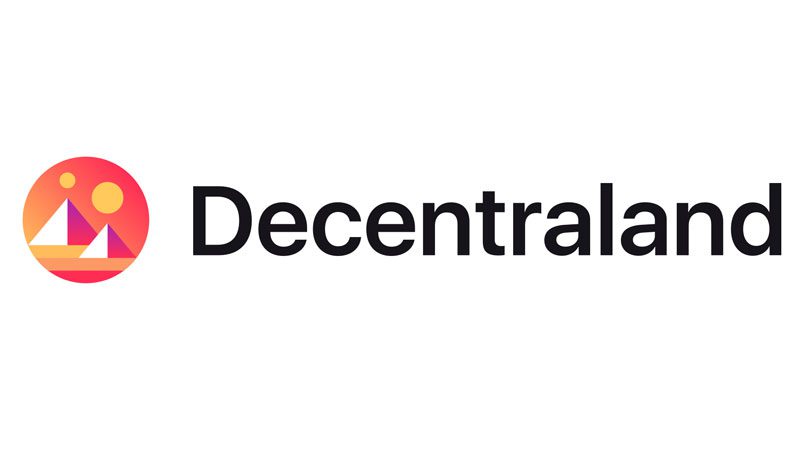
SuperRare:
SuperRare is a platform focused on digital art NFTs. It provides a curated marketplace for digital artists to showcase and sell their unique creations. Each piece of digital art is tokenized as an NFT.
NBA Top Shot:
NBA Top Shot is an NFT platform created by Dapper Labs, offering basketball-themed digital collectibles. Users can own and trade officially licensed NBA highlights in the form of NFTs.

CryptoKitties:
CryptoKitties gained early popularity as a blockchain-based game where users can collect, breed, and trade virtual cats. Each CryptoKitty is an NFT with unique traits and attributes.
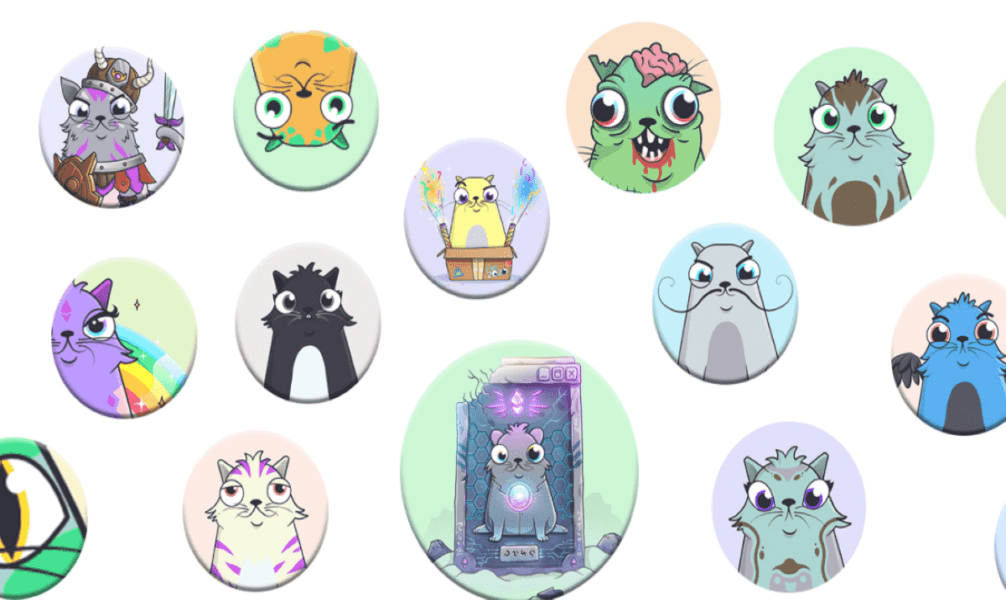
Mintable:
Mintable is an NFT platform that allows users to create, buy, and sell NFTs easily. It offers tools for minting and managing digital assets, making it accessible for both creators and collectors.
Axie Infinity:
Axie Infinity is a blockchain-based game where players can collect, breed, and battle fantasy creatures called Axies. These creatures and in-game items are represented as NFTs on the Ethereum blockchain.
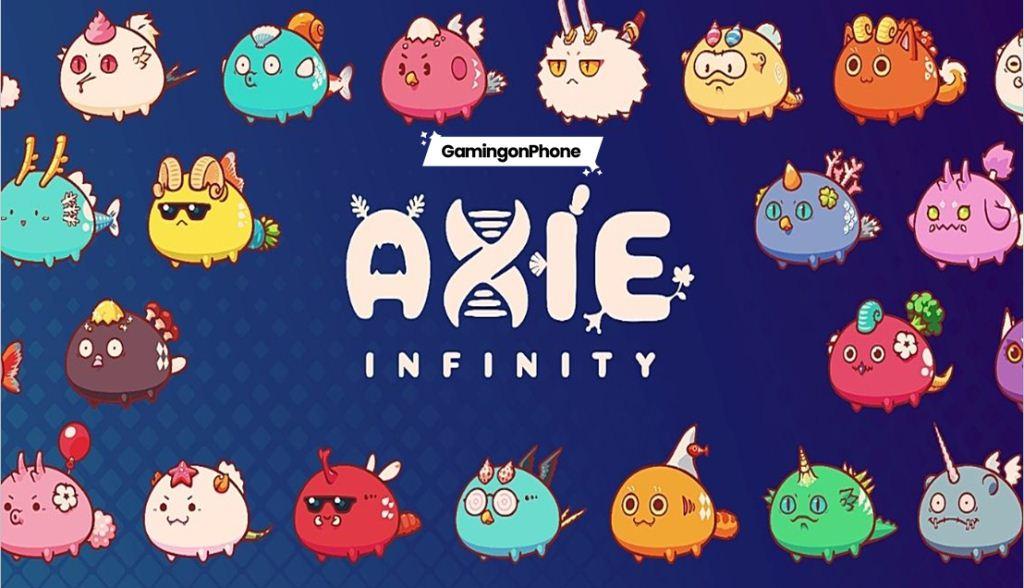
Foundation:
Foundation is an NFT platform focused on digital art and creativity. It allows creators to mint and sell limited-edition digital creations as NFTs, fostering a community-driven approach to art curation.
Enjin:
Enjin is a platform that enables the creation of NFTs on the Ethereum blockchain. It is particularly known for its focus on gaming NFTs, allowing game developers to integrate blockchain-based assets into their games.
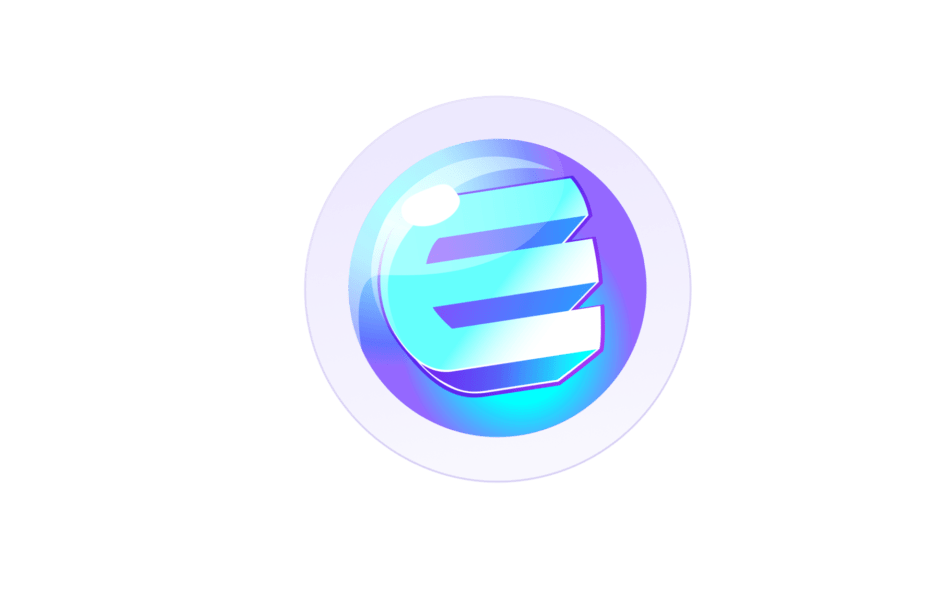
It’s crucial to stay informed about the latest developments in the NFT space, as new platforms and changes in popularity can occur rapidly. Additionally, the features, user interfaces, and community dynamics of these platforms may have evolved since my last update. Always check the official websites and community forums for the most current information on NFT apps.
Conclusion:
NFT apps have transformed the digital landscape, offering creators and collectors unprecedented opportunities to engage with and monetize digital assets. This ultimate guide serves as a roadmap, helping you navigate the diverse world of NFT apps and understand the profound impact they have on art, entertainment, gaming, and beyond.
